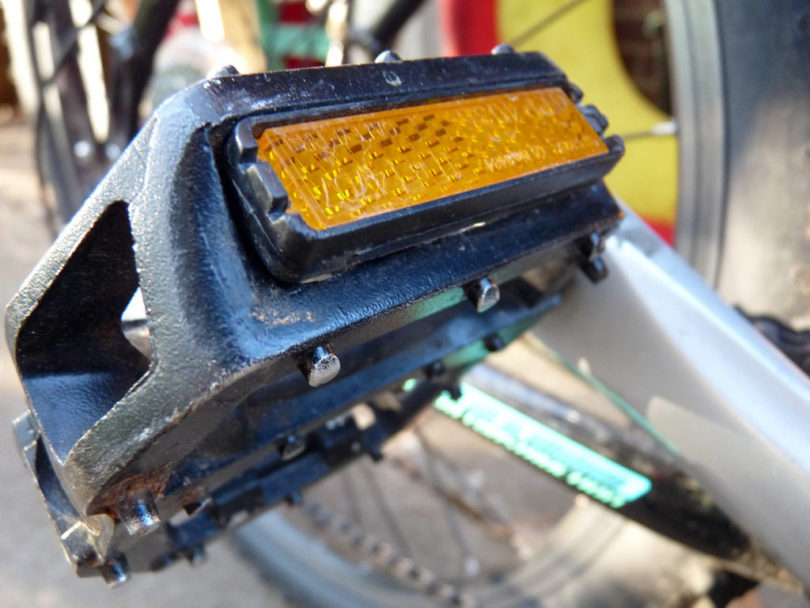There are a few different types of grease that can be used on bike pedals. The most common type is lithium grease, which is what is typically found in household lubricants. This type of grease is good for general use and will not damage the pedal bearings.
However, it may not provide as much protection against dirt and grime as some other types of grease.
If you’re like most cyclists, you probably don’t give much thought to what type of grease you use on your bike pedals. But if you’re looking for the best possible performance from your pedals, it’s worth taking a closer look at the different types of greases available and choosing one that’s well-suited to your needs.
There are two main types of grease used in bike pedals: lithium-based and silicone-based.
Lithium-based greases are typically thicker and more durable than silicone-based greases, making them ideal for use in mountain biking and other off-road applications. Silicone-based greases, on the other hand, are typically thinner and more slippery, making them better suited for road biking and other applications where low friction is desired.
So which type of grease should you use on your bike pedals?
If you’re not sure, it’s probably best to stick with a lithium-based grease; these products tend to be more versatile and easier to find than their silicone-based counterparts. But if you have specific needs or preferences, there’s no harm in trying out a silicone-based grease to see if it works better for you.

Credit: www.youtube.com
Can I Use Any Grease for Bike Pedals?
There are a few different types of grease that can be used on bike pedals, but the most common and effective type is called bicycle-specific grease. This grease is designed to withstand the extreme pressure and temperatures that are generated by pedaling a bike. It is also designed to protect against corrosion, which is a common problem with metal pedals.
Bicycle-specific grease can be found at most bike shops, or online. If you have any questions about what type of grease to use on your pedals, ask a qualified mechanic at your local bike shop.
Should You Grease Bike Pedals?
There’s no right answer to this question – it depends on your personal preferences and riding style. Some people like to grease their bike pedals for extra protection against the elements, while others prefer not to because it can make the pedals slippery. Ultimately, it’s up to you to decide whether or not you want to grease your bike pedals.
If you do decide to grease them, be sure to use a quality pedal grease that won’t gunk up your pedals over time.
How Do You Lubricate Bike Pedals?
There are a few different ways that you can lubricate your bike pedals. The most common method is to use a lubricant such as WD-40 or chain lube. You will want to spray the lubricant onto the pedal spindle and then rotate the pedal so that the lubricant evenly coats the entire surface.
Another way to lubricate your bike pedals is to use a dry lube such as graphite powder. You will want to apply the powder to the pedal spindle and then rotate the pedal so that the powder evenly coats the entire surface.
Can I Use Lithium Grease on Pedals?
Lithium grease is a versatile product that can be used on many different types of surfaces, including pedals. It can help to reduce friction and wear, and can also protect against rust and corrosion. When applying lithium grease to pedals, it is important to use a small amount, as too much can cause the pedals to become slippery.
Grease, Lubricant, Threadlock, Fibregrip: What & Where Should You Use It?
Bike Pedal Grease Substitute
I’m a big fan of bike grease. I’ve used it on my own bikes and have never had any problems. I know that some people prefer to use other lubricants, but I’ve always found bike grease to be the best option.
That said, there are times when you might not have access to bike grease or you might want to try something different. In those cases, here are some substitutes that you can use:
1. WD-40: This is probably the most common substitute for bike grease.
It’s easy to find and it does a decent job of lubricating your pedals. Just be sure to wipe off any excess before riding as it can attract dirt and grime.
2. Vaseline: This is another common household item that can be used as a pedal lubricant.
It’s thick consistency keeps it in place well and helps to protect your pedals from wear and tear. Again, just be sure to wipe off any excess before riding.
3. Baby oil: This is one of my personal favorites when it comes to pedal lubrication substitutes.
Baby oil is very thin so it doesn’t build up on your pedals like some of the other options on this list. Plus, it has a nice scent which is always an added bonus!
Conclusion
There are a few different types of grease that can be used on bike pedals, and each has its own advantages and disadvantages. The most common type of grease is petroleum-based, which offers good protection against moisture and dirt but can attract dust and dirt. Another option is synthetic grease, which is more expensive but lasts longer and does not attract dirt as much as petroleum-based grease.
